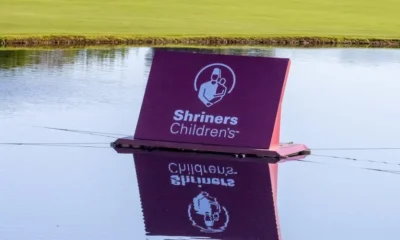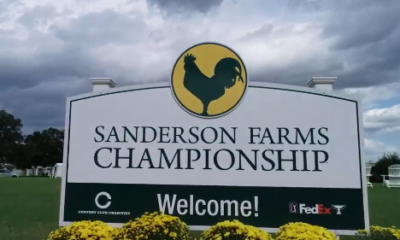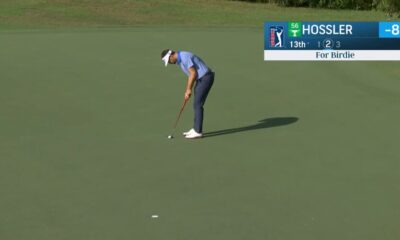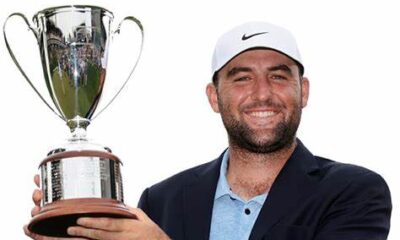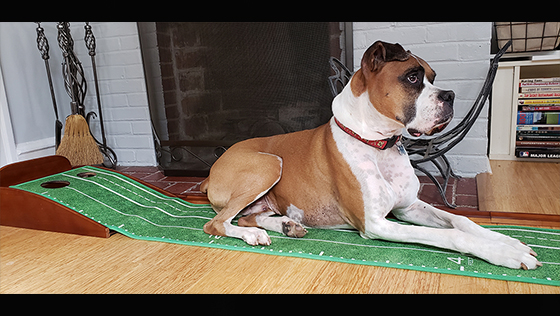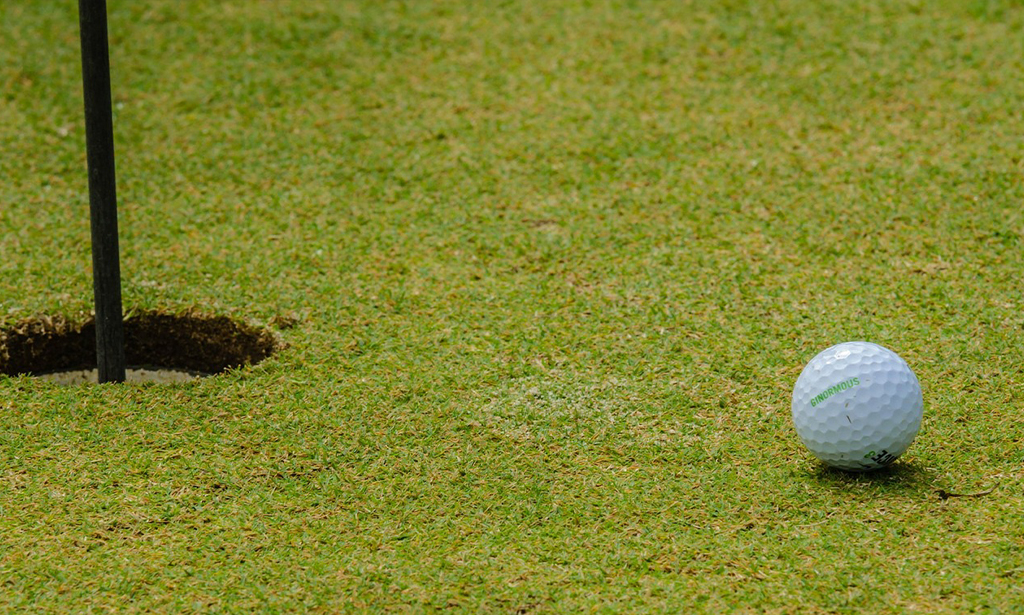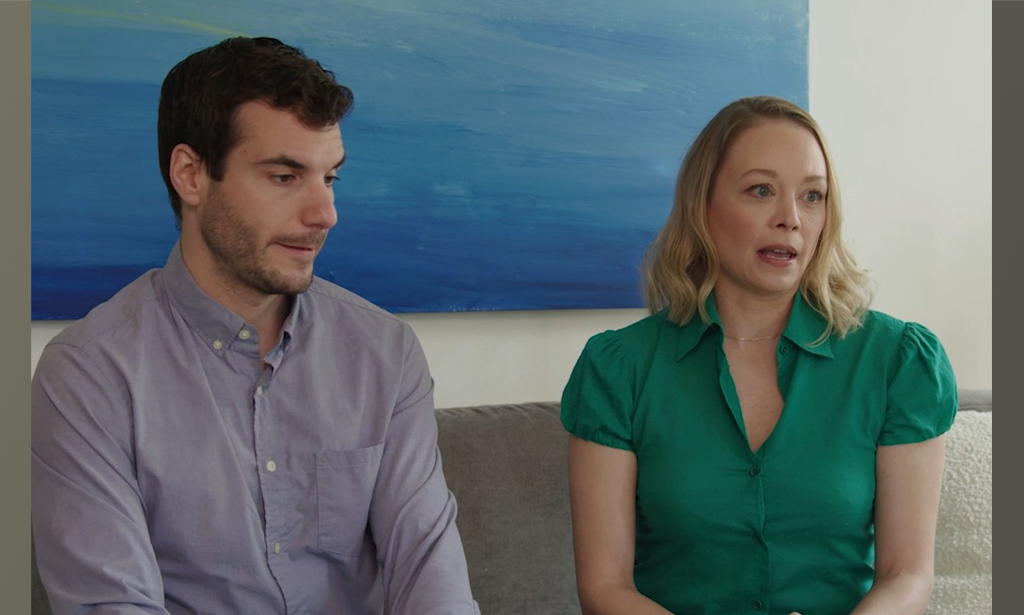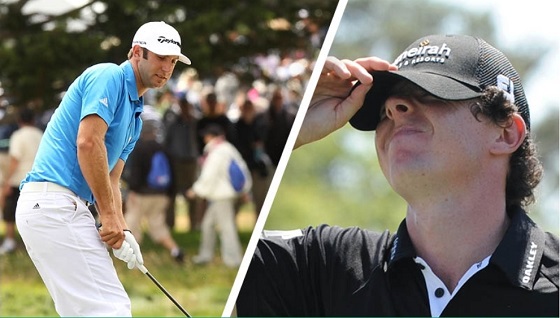Blog
Age is Nothing But a Number for Jim Furyk

So what if Jim Furyk is 51.
So what if he won the Sony Open in Hawaii in 1996 and his most recent win on the PGA Tour came in 2015.
So what if he’s playing in next week’s Mitsubishi Electric Championship at Hualalai, the 2022 kickoff for the PGA Tour Champions.
Count him out at this week’s Sony Open at your own peril.
The winner of 17 PGA Tour titles, among them the 2003 U.S. Open, shot an 8-under 62 Thursday to trail defending champion Kevin Na by one shot through 18 holes of the Sony Open at Waialae Country Club in Honolulu.
Furyk is the second oldest player in the field (Jerry Kelly has him by four years) and punctuated his round with an ace on the par-3 17th, which came after making three consecutive birdies.
“I’ve always loved being here,” said Furyk, who has three Champions victories, including the 2021 U.S. Senior Open. “I love Sony. It’s a place I had a lot of success. I think I lost in a playoff in ’97. Had a lot of top 10s here. Love the course.
An ace for the leader @SonyOpenHawaii! ?@JimFuryk makes the sixth hole-in-one of his career and first since 2011. pic.twitter.com/UX5aXi0tb2— PGA TOUR (@PGATOUR) January 13, 2022
“I’m not hitting the ball far enough to compete out here on a regular basis on a lot of the golf courses. But Waialae is a place I still feel I can get around and shoot under par pretty well and so it’s fun.”
It was Furyk’s sixth PGA Tour ace and he used a 6-iron.
“Caught it just a smidge high in the face,” he said. “And so I loved the line it was on but I wasn’t quite sure I caught enough of it to cover it. And carried on the green probably two or three yards and landed in a perfect spot and then released towards the pin. I guess that’s kind of the line I was looking. You never want to miss that green right. Want to make sure I hit it solid to cover.”
Na, who also shot 61 last year en route to his fifth PGA Tour title, hit every fairway in regulation and was bogey free. He said he started thinking about shooting a 59 when he made eagle on the ninth hole to move to 6 under. A birdie on the 10th got him to 7 under, but he missed some good scoring chances coming in and recorded his fifth 61 or better on Tour.
Na needed 369 starts to get his first PGA Tour win – the 2011 Justin Timberlake Shriner’s Hospital for Children Open – but has won once in each of the past four seasons.
“I played unbelievably well. I did everything well today and my iron play was amazing. My distance control has been great,” said Na, who began his round shortly after Furyk completed his. “For playing a brand new ball, I’m doing pretty well controlling my distance. And I tell you what, I had a chance for a 59. I gave it all I could. I’m a little disappointed my putts didn’t fall, some of the good putts that I hit didn’t fall. But it’s still a good round.
“It was nice to see Jim shoot 61, what an incredible round and how good he is, still is, at age 52, is it? 51? That’s incredible. I hope some day to be that good when I’m 51. It just shows you that it’s out there. I felt like, you know, a good round could be somewhere near that.”
gave it all I got trying to shoot 59.
61 is still not bad haha— Kevin Na (@kevinna915) January 14, 2022
Joining Furyk at 62 was 2013 Sony Open champion Russell Henley.
At 63 were Kevin Chappell, Michael Thompson, Seamus Power and Patton Kizzire. At 64 were six players, including Ryan Palmer and Matt Kuchar.
Chappell, who had been bothered by back ailments for years, had microdiscectomy and laminectomy surgery on his back in 2018. In his first start after the procedure, he shot a 59 in the 2019 Military Tribute at the Greenbrier. But he’s struggled since returning; he hasn’t had a top-10 finish in 31 starts since.
“I definitely had some lingering stuff going last year coming from my back, and kind of end of the year I decided, I wasn’t good physically, I wasn’t good mentally and I needed to take some time (off),” Chappell said. “The Tour has been phenomenal with that, supporting me. Really dove into the mental side and believe it or not, the better I got mentally, the better my back got.
“It’s been a lot of hard work, but it’s been great. Every tee shot is still uncomfortable for me, but it’s such a wonderful place to be. I’ve been working my ass off, excuse my language. Like I said, I didn’t expect it, but I’m not surprised. I’ve been seeing some good stuff at home and really proud of the work I’ve done.”
Furyk, the only player in PGA Tour history to shoot two sub-60 rounds and the only player to sign for a 58, shot his lowest total score since shooting 65 in the 2019 World Golf Championships-FedEx St. Jude Invitational. He last won on the PGA Tour since in 2015 RBC Heritage.
After starting with a 3-putt from 85 feet, Furyk made 150 feet of putts, including birdie putts of 11, 16, 25, 31 and 33 feet, as well as two two-footers.
“Everything was kind of at the hole and on target,” he said.
Furyk said he played a practice round with Brent Grant this week and Grant called him “sir.”
“Later on he asked me what I liked most about the Champions Tour, and I said, ‘No one calls me ‘sir,’” Furyk said. “He said his dad would be angry with him if he didn’t.”
Furyk knows his age will come up when he’s contending on the PGA Tour. So, naturally, he was asked about his good friend, Phil Mickelson, who at 50 became the oldest player to win a major in last year’s PGA Championship, and Bernhard Langer, who won a Champions Tour event last year at age 64.
This article originally appeared on Golfweek.
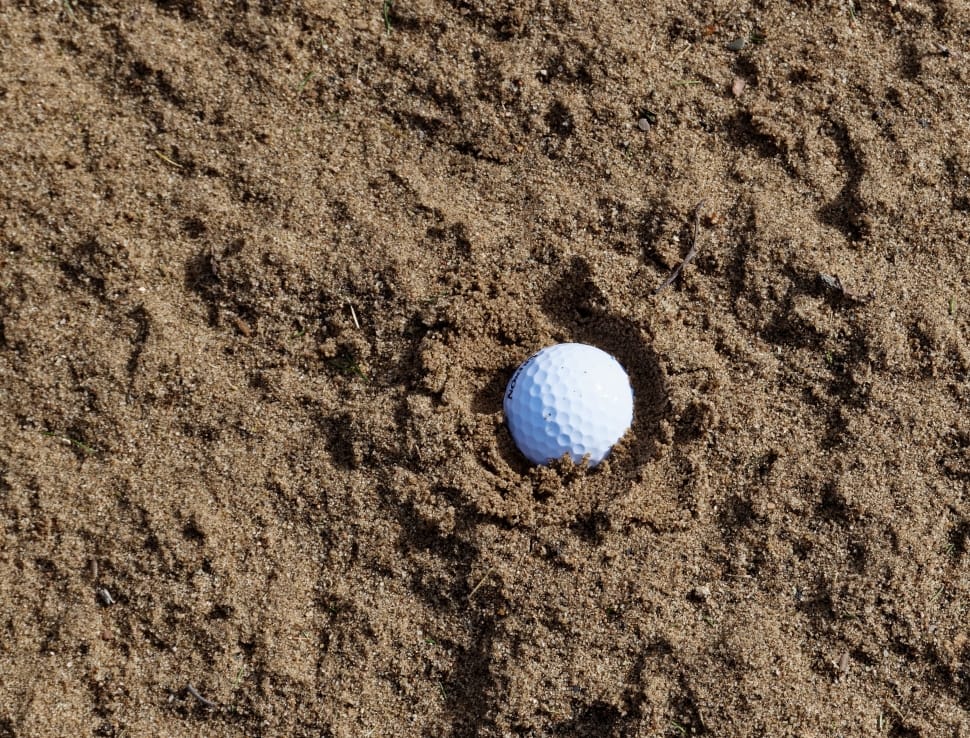
Hey there, golf warriors! Today, we’re venturing into the sandy side of the course—those bunkers, traps, and beach-like hazards that seem to pop up exactly where you don’t want them. Bunkers are like the quicksand of golf; one wrong step and your game could sink faster than a golf ball into a water hazard. But don’t worry—I’ve got your back. Let’s dive into the art of bunker escapes with a touch of humor and, hopefully, without too much sand in our shoes.
- The Sand Trap Strategy: Aim for Survival
First things first: getting stuck in a bunker isn’t the end of the world (though it might feel like it if you’ve found yourself in one of those “death traps” where the lip is higher than your dreams of breaking 90). The key? Survival. Don’t overthink it. Your goal is simple—get out and live to putt another day. Sure, you’d like to land softly on the green, but let’s be honest—getting anywhere onto solid grass feels like a win. - The “Flop It and Flee” Approach
Ah, the flop shot. When executed correctly, it’s one of the most beautiful shots in golf, and when it goes wrong, it’s like flinging a shovelful of sand in your face. The trick to a good flop out of a bunker? Open the clubface wide, aim slightly behind the ball, and swing like you’re trying to toss a pancake onto the green (without the sticky mess). The real key is your confidence—flop it and flee before anyone realizes you were as nervous as a cat in a dog park. - The 3 Types of Bunker Players: Which One Are You?
There are three types of golfers when it comes to bunkers:- The “Pretender” – This golfer steps into the bunker and instantly regrets every life choice that led them here. Their bunker shot might go sideways (literally), but they’ll put on a brave face and laugh it off. Bonus points if they brush off the sand with a half-smile, pretending it’s no big deal.
- The “Digger” – Armed with a sand wedge and a mission, they dig into the bunker with full commitment. Every swing gets them closer to the surface… but mostly it’s just a lot of sand. By the time they’re out, they’ve practically built their own bunker.
- The “Pro” – This rare breed strides into the bunker like it’s their personal beach. They barely disturb the sand, and the ball floats gracefully out, landing inches from the pin. These people exist to make the rest of us look like amateurs, but we all secretly want to be them.
- The Secret? It’s All in the Follow-Through
Here’s the big secret that’ll change your bunker game: the follow-through is everything. You need to swing through the sand like you’re cutting through butter with a hot knife. Don’t stop after contact—keep going, and let that momentum carry you (and the ball) to freedom. Think of it as the golf equivalent of running through the finish line, not to it. - Own the Sand Dance
Lastly, let’s not forget that bunkers aren’t just about survival. No, my friends, they’re about style. The moment you step into that sandy pit, you’re not just a golfer—you’re an artist about to perform a masterpiece. Own the bunker like it’s your stage. And when you finally hit that ball onto the green, do the post-swing sand dance—you know, that little twist as you casually sweep the sand with your foot, pretending that was all part of the plan. - Keep Calm and Rake On
When all is said and done, remember: bunkers are temporary, but raking is forever. After your escape (or at least after you’ve dug yourself out), it’s time to channel your inner zen gardener and rake the bunker smooth for the next poor soul. It’s golf karma—leave it better than you found it. And don’t forget to smile while you rake—it’s part of the healing process.
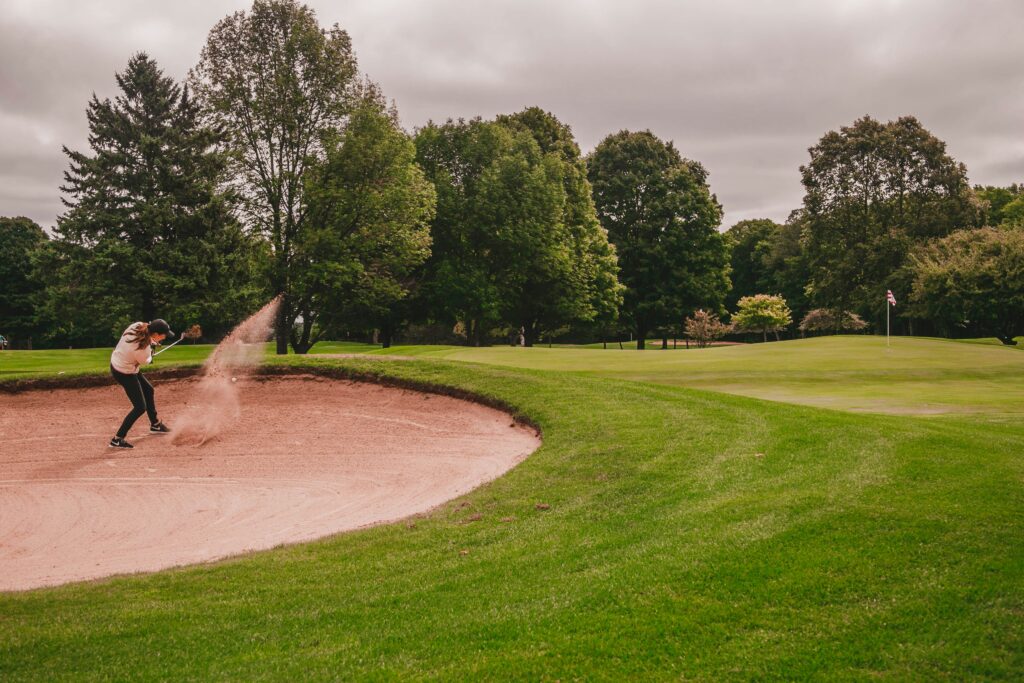
So there you have it, fellow golf gladiators—the battle of the bunkers, waged and (hopefully) won. Next time you find yourself knee-deep in sand, remember these tips: survive with style, embrace the flop, own the follow-through, and most importantly, laugh it off. You’ll get out, eventually, and when you do, you’ll be a little wiser—and possibly a little sandier. Until next time, may your swings be clean, your sand traps be shallow, and your escapes be legendary. Swing on, my friends!
Blog
The NFL 1 PM Parlay Adventure with a Golf Twist!
Kelly’s 7-leg parlay this Sunday combines NFL action and a bold golf pick, offering a thrilling chance to turn $10 into $1,778 while cheering for touchdowns and birdies!

Hey there, fellow sports fanatics! 🏈⛳ It’s Kelly, back again to make your Sunday even more thrilling! Today, I’ve got something special for you—a 7-leg parlay featuring not just NFL action, but also a golf pick to keep things extra exciting. If you love football and want a little extra reason to cheer, while adding some golf flavor, this parlay might be the perfect way to spice up your Sunday! Let’s dive in!
- Bengals Money Line (-250): Joe Burrow and the Bengals are taking on the Cleveland Browns, and I’ve got confidence in Cincinnati to come out on top. With their offense clicking, it’s hard to bet against them!
- Vikings Money Line (-120): The Vikings are at home against the Detroit Lions, and I’m putting my money on Kirk Cousins to do what he does best—win at home. Detroit is scrappy, but the Vikings have that extra edge in front of their fans.
- Colts Money Line (-165): The Colts are hosting the Miami Dolphins, and I think Indy is going to pull this one off. Miami’s been unpredictable, but the Colts’ defense should be enough to seal the deal.
- Eagles Money Line (-165): The Eagles are going up against the Giants, and let’s be honest—the Eagles are just a better team right now. Whether it’s Jalen Hurts scrambling for yards or the defense stepping up, Philly looks good for a win.
- Bills Money Line (-500): The Buffalo Bills are taking on the Tennessee Titans, and this one seems like a no-brainer. The Bills are strong favorites for a reason—they’ve been crushing it lately, and I expect them to keep up the momentum.
- Seahawks Money Line (+130): Now for the fun underdog pick—Seattle over the Atlanta Falcons! Geno Smith has been looking solid, and I think the Seahawks have what it takes to upset Atlanta. Plus, at +130, this one adds some nice value to our parlay.
- Doug Ghim Tournament Winner (+850): Adding some golf into the mix, we’re betting on Doug Ghim to take the win at the Shriners Children’s Open. Ghim has been in solid form, and a win here would make this parlay all the more rewarding. It’s a bold pick, but that’s what makes it fun!
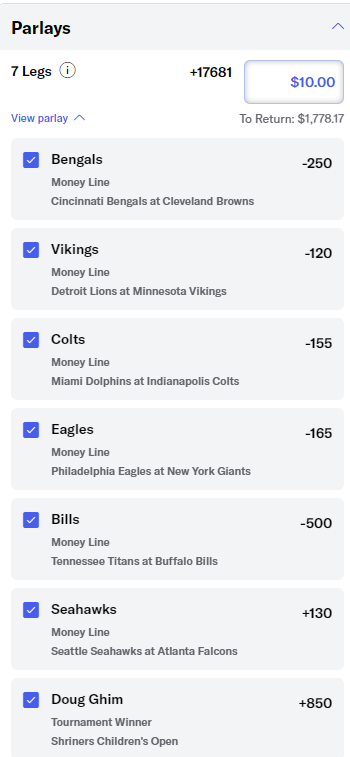
The Odds and the Thrill:
This 7-leg parlay comes in at +17681 odds, which means a $10 bet pays out $1,778.17! Now that’s some serious potential for a Sunday funday! 💸🔥 Imagine sitting back, watching the games unfold, and also keeping an eye on the golf leaderboard—it doesn’t get much more exciting than that!
Why Bet This Parlay?
Adding golf to the NFL mix makes for an extra thrilling ride. Betting parlays like this is about making every moment count, from touchdowns to birdies. It’s not about breaking the bank—it’s about feeling the rush of having skin in the game. Even the smallest plays can make your heart race. With a potential payout of $1,778, why not take a shot?
Let’s Ride Together!
I’m calling this one “The NFL and Golf Parlay Adventure.” It’s a perfect blend of favorites, a strong underdog, and a golf pick to keep it spicy. Who’s in with me? Let’s place that small bet, cheer for every score, and see if we can turn $10 into $1,778 by the time the day is over! 🤑🏆
Drop your thoughts below, share your picks, and let’s enjoy this Sunday with a bit of added thrill. Remember, it’s all about having fun—bet responsibly and enjoy the ride! 🚀💚
#KellysPicks #NFLSunday #GolfBetting #ParlayTime #BettingFun #LetsWinTogether

Hello, golf enthusiasts and tech aficionados,
In today’s installment of “Tales from the Greens: Chronicles of Golf Through the Ages,” we dive into the exciting world of emerging golf technologies. From smart golf clubs that offer real-time swing analytics to next-generation simulators that bring the world’s top courses to your living room, the future of golf is here. Let’s explore these innovations that are transforming how we play and enjoy golf.
Smart Golf Clubs: Enhancing Performance with Data
The latest development in golf equipment is the smart club. These clubs are equipped with sensors and other technologies that provide feedback on every swing. Here’s how they’re changing the game:
- Swing Analysis: Sensors track speed, angle, and precision, offering suggestions for improvement.
- Real-Time Feedback: Connect your club to a smartphone app to get immediate insights during practice rounds, enabling on-the-spot adjustments.
Next-Gen Golf Simulators: A Gateway to Virtual Courses
Golf simulators have evolved significantly, with the latest models offering an immersive experience that rivals playing on a real course. Benefits include:

- Virtual Play on Famous Courses: Play world-famous courses from your home, experiencing different terrains and conditions without travel. Check out places like Top Golf and Five Iron Golf.
- Improved Accuracy: High-definition cameras and sensors capture your swing and ball trajectory with incredible precision, providing a realistic golfing experience.
AI and Machine Learning: Customized Coaching
Artificial intelligence (AI) in golf isn’t just a concept; it’s becoming a practical coaching tool. AI analyzes your performance over time to offer customized coaching tips, making it a personal trainer at your fingertips.
Social Integration: Connect and Compete
Modern golf technologies allow players to connect with friends and competitors online. Share your performance data, challenge others to virtual rounds, and even enter online tournaments.
These technological advancements are making golf more accessible and enjoyable for players at all levels. Whether you’re a seasoned pro looking to fine-tune your game or a newcomer seeking a friendly introduction to the sport, there’s never been a better time to be a golfer.
Stay tuned as we continue to explore how innovation is driving the future of golf.
Warm regards, Robert Greenfield
-

 Product Review5 years ago
Product Review5 years agoThe Perfect Practice Putting Mat Review by Jason Tenzer
-

 Blog3 years ago
Blog3 years agoLoophole Rule Offers PGA Tour Pros a Mulligan
-

 Blog3 years ago
Blog3 years ago2021 Buyer’s Guide: The Top 10 Value Golf Balls For Distance & Feel
-

 Blog3 years ago
Blog3 years agoGolf Marriage Counselor
-

 Blog5 years ago
Blog5 years ago9 Biggest Chokes Of The Past Decade
-

 Product Review5 years ago
Product Review5 years agoTHE ADJUSTABLE IRONS: WALKING STICKS GOLF CLUBS
-

 Blog3 years ago
Blog3 years agoWhat Your Golf Clubs Say About You
-

 Equipment5 years ago
Equipment5 years agoOHK Sports Interview by Jason Tenzer



